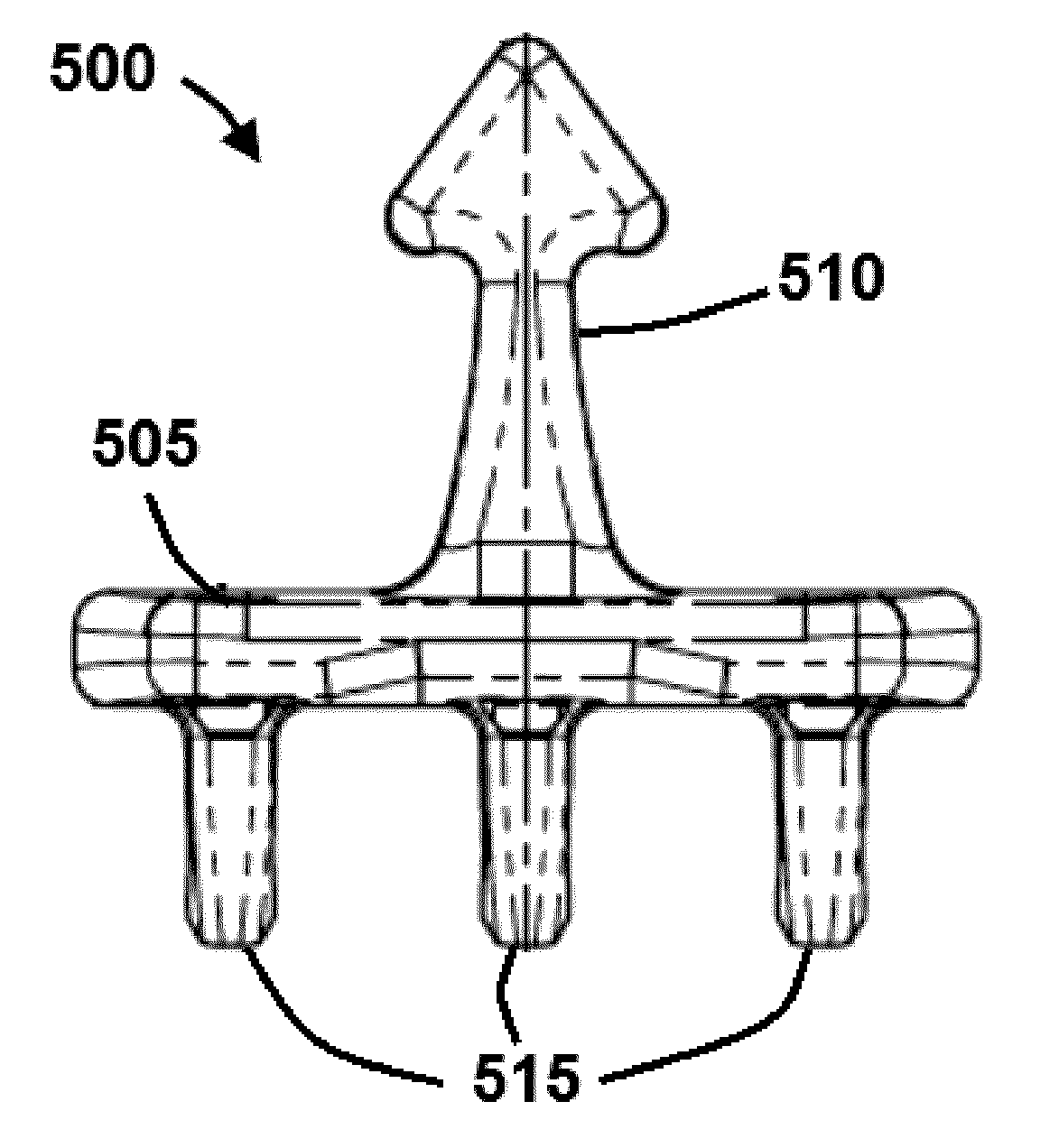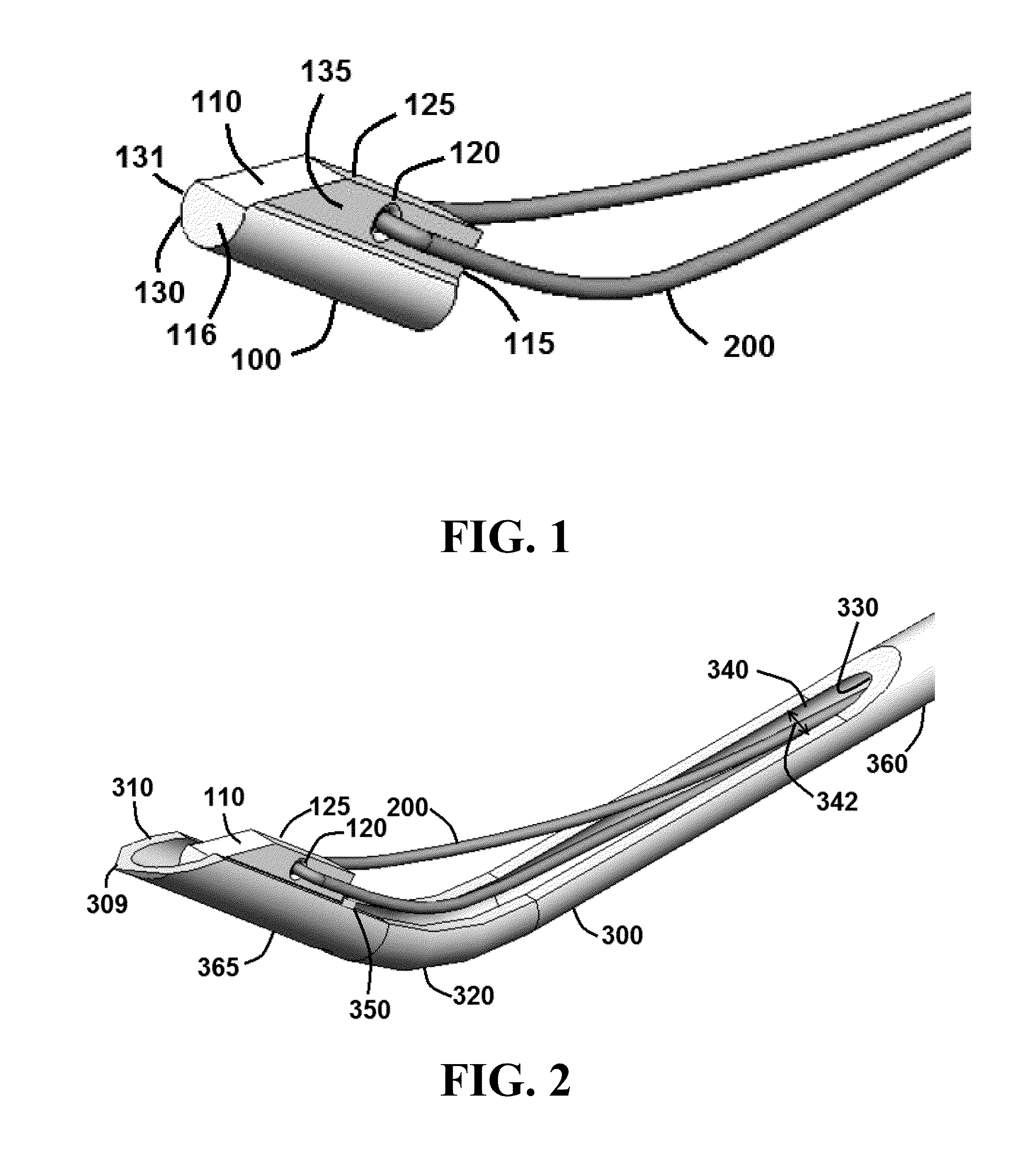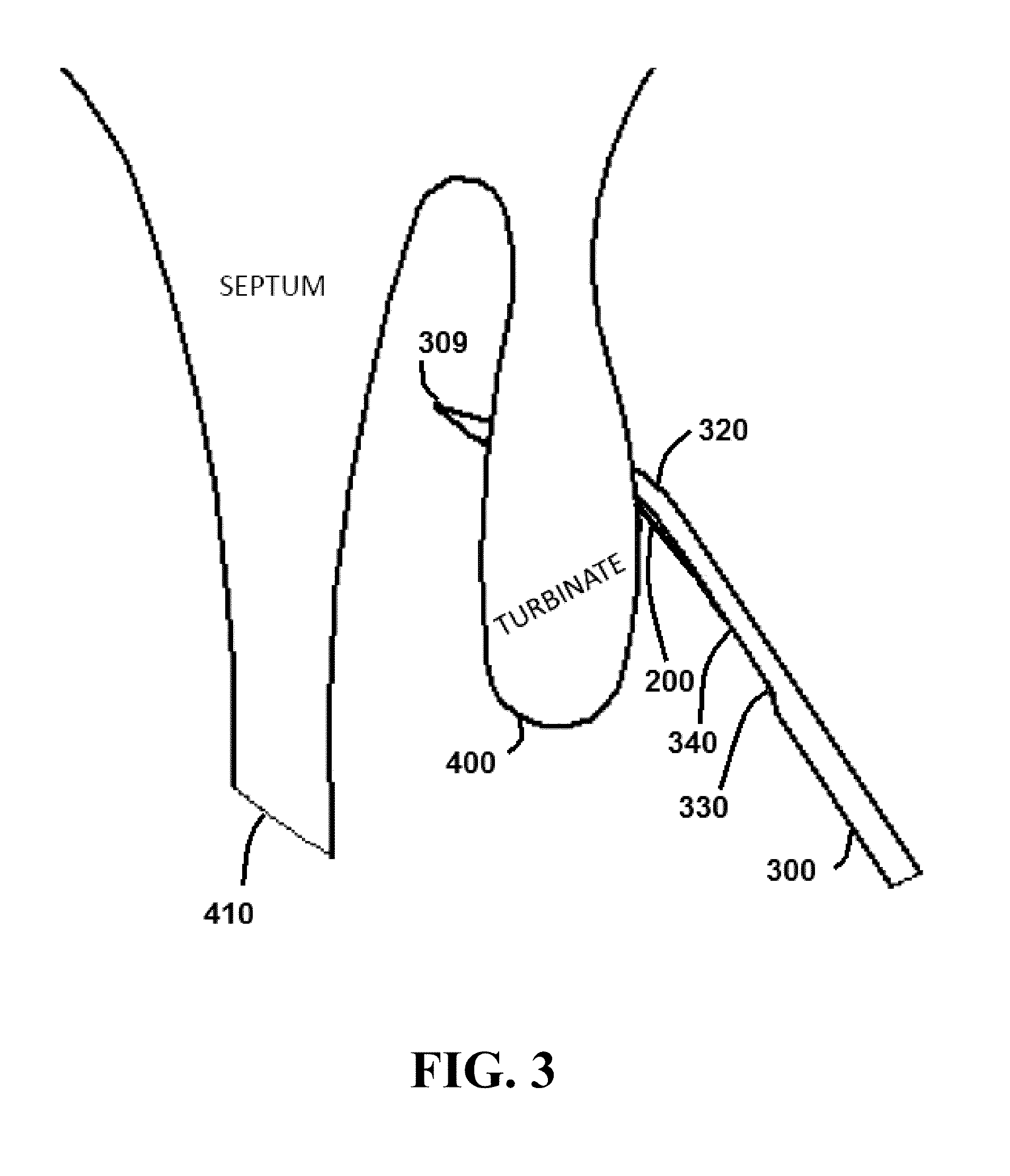Methods and Systems for Medializing a Turbinate
- Summary
- Abstract
- Description
- Claims
- Application Information
AI Technical Summary
Benefits of technology
Problems solved by technology
Method used
Image
Examples
Embodiment Construction
[0059]Embodiments of the present disclosure comprise a method and system for medializing one or more turbinates in a nasal cavity. Specific embodiments comprise a method and system for displacing a middle turbinate towards a septum and holding the middle turbinate proximal to the septum. Referring initially to FIGS. 1-8, an implant 100 is coupled to a flexible member or suture 200 and an insertion device 300. In this embodiment, implant 100 comprises a tapered surface 110 proximal to a leading end 116, and a trailing end 115 that is substantially perpendicular to an axis extending between leading end 116 and trailing end 115. In the illustrated embodiment, implant 100 comprises a lateral surface 125 and an aperture 120, through which suture 200 passes. Implant 100 can be inserted into insertion device 300 so that tapered surface 110 is generally aligned with a tapered surface 310 proximal to an end 309 of insertion device 300. In the embodiment shown, insertion device 300 comprises ...
PUM
 Login to View More
Login to View More Abstract
Description
Claims
Application Information
 Login to View More
Login to View More - R&D Engineer
- R&D Manager
- IP Professional
- Industry Leading Data Capabilities
- Powerful AI technology
- Patent DNA Extraction
Browse by: Latest US Patents, China's latest patents, Technical Efficacy Thesaurus, Application Domain, Technology Topic, Popular Technical Reports.
© 2024 PatSnap. All rights reserved.Legal|Privacy policy|Modern Slavery Act Transparency Statement|Sitemap|About US| Contact US: help@patsnap.com










